Fate/Stay Night: Setting Up for a Decade of Quality Success
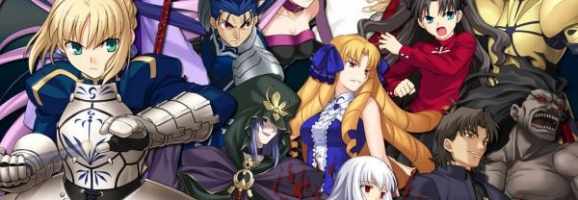
If you have no idea what the words “Fate Stay Night” mean to you, turn back, pick your favorite streaming site, cancel all your plans for the next day, grab some popcorn and coffee, start watching, and do not come back until you’ve finished every related legally purchasable media outlet of the franchise, or at least the major animated works and the original visual novel (because I’ll be focusing on those). You are missing out on a legendary work.
It’s not uncommon to be a fan of the Fate series. Nearly all segments of the franchise have been met with critical acclaim and massive popularity, both domestically and internationally. Thus far, there are six major media installments and an enormous ensemble of minor works, and with another anime series starting within the next week (along with an animated movie planned for 2015), one can’t help but be in awe at the success a single visual novel has achieved over the past decade. Though Fate/Stay Night isn’t alone in its triumphs, it’s a bit of an outlier compared to other similarly extolled series. Unlike eternally running shounen series, Fate/Stay Night outlets aren’t based on a continuously and presently running medium. The lifetime of the original Fate franchise is limited and has set boundaries. However, Fate/Stay Night doesn’t fit in the mold of other popular series that are met with identically positive reception. Even Clannad, being one of the more prolific series, only has two long seasons of anime on top of the various OVA’s and the original visual novel. The longevity of the two aren’t comparable, even though the two have similar beginnings. What exactly is the secret to Fate‘s success?
The Journey
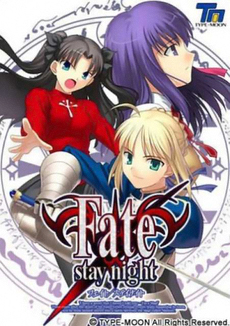
For those who adamantly refused to listen to my earlier pleas or need a refresher, here’s a bit of knowledge that should prepare you for the treasures ahead. What I refer to as the Fate franchise started with the visual novel released in 2004, Fate/Stay Night, which garnered critical accolades in a year filled with highly praised games released from companies known for quality work in the genre. The attention for Fate/Stay Night was directed towards the writer’s unique style of delivering narrative along with the game’s relatively simple yet deep branching storylines. For a visual novel, Fate/Stay Night has relatively few branches, but we shall see that this turned out to be a key factor to its success as a media franchise. The original work for Fate/Stay Night was divided into three branches: Fate, Unlimited Blade Works, and Heaven’s Feel, played in that order. Each branch emphasized interactions with one heroine, Saber, Rin Tohsaka, and Sakura Matou respectively. The popularity of the game was so successful that in 2005, publisher Nitroplus (known for Steins;Gate and Chaos;Head) worked with Type-Moon to put out a light novel series christened Fate/Zero, a prequel to the original visual novel storyline. The light novels themselves were considered a commercial success and were praised for keeping great consistency with the initial work. In 2006, the anime covering the Fate arc titled Fate/Stay Night aired. After 5 years of spinoffs and an animated movie that partially covered Unlimited Blade Works, an anime adaptation Fate/Zero was released and garnered massive praise. And now, in 2014, an anime adaptation for Unlimited Blade works is about to air for the Fall 2014 lineup.
For the purposes of length and avoiding repetitious statements, I’ll primarily be focusing on the original visual novel and all past and future anime adaptations of the aforementioned game, along with the Fate/Zero animated work. Now, armed with the necessary knowledge, it’s on to investigating the factors to Fate/Stay Night‘s long-lived success.
The Least Important Things: Eye-and-Ear Candy
Before getting to the really meaningful factors, it’s important to get the givens out of the way. It’s hard to deny that the major installments in the Fate series are graphically and acoustically pleasing. In particular, the visuals seem to get exponentially better with time. Though nothing fancy, the Fate/Stay Night visual novel presents solid art. The characters are drawn in a unique style, and their designs are (luckily) noticeable and distinct. There are inconsistencies in the quality of art; portraits in very few scenes feature the characters with slightly longer or wider faces, yet not grotesquely so, and some main character stock art present slightly different eye sizes, but overall, the visual novel is well drawn. A mere two years later, the Fate/Stay Night anime upped the ante and significantly improved the consistency of the character expressions. It was comforting to see that Studio DEEN retained the style of the visual novel whilst increasing the fidelity. One surprising thing about the anime was the quality of animation. Even in 2014, it’s hard to come across an anime that has such evident effort invested in ensuring that the animation is smooth. Fate/Stay Night was visually impressive because not only was the art consistently high-quality, but also held up in scenes with motion.
Fate/Stay Night was exemplary work, but the best was yet to come. In 2011, Fate/Zero aired and blew everyone away. Ufotable did an absolutely stellar job animating the series. Film-level animation was present in every installment in the 26-episode series, and regardless of one’s preference in anime, it was hard to deny that Fate/Zero looked amazing. And still the original style hung on, looking more refined than ever before. Talking scenes were as fluid as the action scenes, and no motion looked shoddy or stiff. If only for the visual achievements, the latest animated series was an undeniable success.
The soundtracks also play a large role in maintaining traditional Fate quality. With the exception of one or two tracks, the visual novel OST is exceptional. With modern visual novels OST’s containing well over double the tracks of those a decade ago, Fate/Stay Night manages to cover a variety of moods with five main songs. The lack of tracks isn’t a bother, but rather an indication of talent in developing music that considers a wide variety of situations with limited resources. Again, the anime adaptation takes the quality a step up from the steady work of the visual novel. With some remixed tracks and many new ones, the anime soundtrack doesn’t fail to keep the audience immersed in the show. The complete gamut of traditional orchestra music is utilized, and familiar tunes are played with the quality of those found in feature films. Works of comparable quality were composed for Fate/Zero, resulting in a series that’s both pleasing to hear and watch. Even the voices were done with utmost care. The Fate franchise managed to accrue some of the most prolific voice actors and actresses in the industry. Even side characters were given notable actors who have worked on several renown anime, ranging from Amagami SS (2010) to Dragon Ball (1986).
The most noticeable parts of the OST were the openings. Fate/Stay Night‘s opening songs were some of the best that I’ve seen to date. The songs fully capture the emotions and atmosphere of the series accurately. The first (disillusion, Sachi Tainaka) is gloomy and frustrated, an atmosphere that clearly reflects that of Shirou’s in the midst of sudden rapid-fire events that are completely foreign to him, a world full of death and darkness, sentiments captured equally well by both the melody and the lyrics. The second (Kirameku Namida wa Hoshi ni, Tainaka) exhibits similar darkness, but exudes determination to succeed in spite of hardships, again encapsulated by both the music and words. Fate/Zero showcases an equally catchy and appropriate first opening, but the second wasn’t quite as melodically appealing.
The Most Important Thing: Nonlinear Narrative
Now that the relatively minor stuff has been handled, we can take a look at the groundwork, the foundation of the franchise’s success, and it all lies in the hands one man who decided to write one game. The absolutely, indubitably most important factor of Fate’s triumph is Nasu Kinoko’s, the author’s, choice of nonlinear narrative and his specific opinion on how nonlinear narrative ought to be done.
Why start with the most important factor right after the less significant ones? Because the rest of the discussion can’t continue meaningfully without fully fleshing out the impact that Nasu Kinoko’s choice had; the other factors are fully and inextricably intertwined in this single aspect. It’s not an exaggeration to say that without the specific structure of narrative, a completely different work would have been produced, even if the words were the same.

What exactly does nonlinear narrative entail? It’s a form of delivering narrative that requires input from the audience, and one of the only forms of interactive writing. More often than not, works with nonlinear narrative will have branching plots, instances in the story in which a reader can deviate from the “main” story. Choose your own adventure books utilize nonlinear narrative and branches. In visual novels, the “choose your own adventure” part usually comes in the form of interactive dialogue choices and actions. Some decisions make a significant impact on the story revealed to the player, while others merely show a different scene without any meaningful changes to the overarching plot. Japanese visual novels are notorious for taking the decision-making split far too seriously. Take 999: Nine Hours, Nine Persons, Nine Doors. As the name might suggest, there are a possible 999 different storylines, with nearly every decision resulting in the unveiling of new information. To truly understand the entire story, one must play through all 999 storylines. These changes in the story aren’t trivial; each decision ends with an entirely different ending.
Though 999 takes the potential of visual novels just a bit overboard, it emphasizes the reason Fate/Stay Night is particularly long-lived: using nonlinear narrative allows for overall greater complexity and added material without needlessly complicating a single branch or requiring an entirely new setup. Examining each component of the structure with scrutiny is important, but the best place to start is always the beginning.
The Consequences of a Unified Start
For centuries, Fuyuki City has been the battleground for a periodical conflict called the Holy Grail War, a fight between seven magi to obtain the Holy Grail, a magical device that can grant any wish. The magi, however, do not fight amongst each other directly; they instead become Masters by summoning powerful familiars called Servants, legendary figures from previous eras. During the fourth iteration of the war, a man named Emiya Kiritsugu attempted to destroy the Holy Grail. Unfortunately, this resulted in the Holy Grail spilling its contents and burning down a large neighborhood. Kiritsugu, under the pressure of guilt, searched through the town looking for survivors, and stumbles across a young boy. This is where the story of Emiya Shirou, the adopted son of Emiya Kiritsugu, starts.
The two lived together in Fuyuki City peacefully until Kiritsugu suddenly passed away. However, the father-figure left much with his adoptive son. Though informal and incomplete, Kiritsugu passed down the knowledge of the existence of magic and magi. Equally important was his dream of becoming an ally of justice, a dream Kiritsugu mentioned that he himself once had and his son inherited. Time has passed, and Shirou is now a second-year in high school. One day after staying back at school, he spots what seems like two people fighting. Unbeknownst to him, the fifth Holy Grail War had started and the two figures fighting were Servants. One of the servants disengages from the fight and chases after Shirou, ready to kill him as he is a witness to a highly secretive magic war . Shirou runs back into school, but with superhuman agility, the blue figure catches up and stabs Shirou in the chest, leaving him for dead. Shirou is brought back from a near death state with the help of Rin Tohsaka, the school’s idol and top honor student who also happens to be a magus that is participating in the Holy Grail War. Miraculously alive, Shirou rushes back home, only to be ambushed again by the mysterious man in blue. Trapped in his shed with nowhere to run or hide, the amateur magus summons the Servant Saber, who proceeds to ask him, “Are you my master?”.
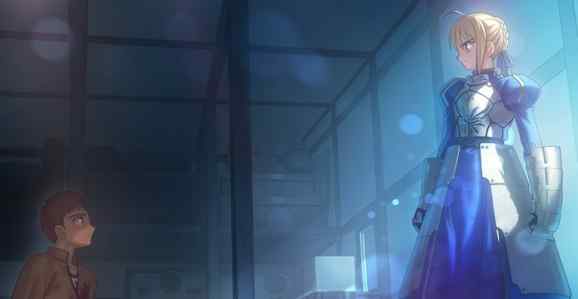
This is the prologue and the common beginning for all the different routes and endings of Fate/Stay Night. Though it’s nearly a universal feature of visual novels, adhering to this standard was an important decision because unified start provides an inherent narrative advantage that allow other media outlets to more easily gain popularity.
By starting every route with the same start, it provides consistency to each story. A common prologue means restricting the information that can be given during one play; in other words, we won’t be having Kiritsugu die in one route while surviving in a different one. The facts revealed make the boundaries absolutely clear. Certainly, different perspectives unveil new facets of the background, but because a concrete limit was set on the liberties that could be taken within the game, no new information is inconsistent with previous distributed knowledge.
Why is this important at all? Aside from the obvious importance of consistency in developing an immersive universe, it results in a franchise that can succeed with multiple products. Branching plotlines aren’t extensions (prequels and sequels) or spinoffs (alternate universes), and therefore viewers can enjoy a show, manga, or novel without the need to be reintroduced to the characters every time a new media outlet is released while enjoying a completely different story, distinct enough to be called its own series. Those of you who have seen or played through the Unlimited Blade Works route (which should be everyone, right?) know that it’s a completely different story than the main Fate storyline. But instead having to redo the exposition, there is a common ground between the two unique narratives. Anyone who has watched one or the other can have a full grasp of what they’re getting into without the need to set up a new, immersive universe when watching the other series; the work has already been done. Consequently, this lowers the effort viewers have when watching different series. Those who have already watched Fate/Stay Night can enjoy Unlimited Blade Works far more easily because the world and people they are viewing are one and the same.

On the production side of things, this lowers the stress in constructing an introduction conducive to the viewers. Since every series will start the same way, narratively speaking, production studios have a clear precedent on what captivates the audience. They also have the leeway to take some liberties with the prologue. Though the visual novel has a static beginning, other media can easily highlight or underscore certain aspects that are pertinent to their particular route or story. Rin Tohsaka, the main heroine of Unlimited Blade Works, isn’t given too much emphasis in the prologue of the first Fate/Stay Night anime, but by emphasizing her existence in the beginning scenes, the anime adaptation for Unlimited Blade Works can easily change the focus of a preset introduction. These small changes aren’t huge but will significantly impact the tone and atmosphere of a work overall, and all of these come from the fact that any work based on the Fate/Stay Night visual novel shares the common beginning.
Diverging Plots and Converging Details
While all the aforementioned benefits of having a singular starting point for distinct stories are great, its main function is, in the end, to serve as a base point for the entire collection of works. It’s the most important utility because it ties together any of the rhetorical freedom used by the writer in fleshing out the entire franchise. As previously stated, Fate/Stay Night is composed of three different routes, and it is because of this split that the visual novel has spawned such success. The preeminent and most noticeable consequence of that is that narrative development becomes highly intricate and complex.
Each branch of Fate/Stay Night might be unique, but because of a common starting place, Nasu Kinoko takes it upon himself to expand his created universe via all three stories. One cannot fully know the entire happening of the 5th Holy Grail War without playing through all the different routes because the important details are dispersed throughout each individual branch. It’s important to note that this isn’t a universal standard to which all visual novels abide. The separation of details by route is common, but in many games, the details only add a surface layer of significance that doesn’t really add to the story or characters in a meaningful way. The works that do include this quality tend to be the most critically acclaimed and interesting to play. 999 is extreme because every branch reveals something significant about the in-game universe, and only by playing through all routes can players confirm everything they know is true.
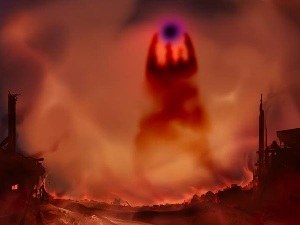
Information about the Holy Grail War is distributed in this way. In the first playthrough, the player only finds out what is necessary to complete the game with a decent understanding of the current status of the Holy Grail Wars, that it is a periodic event in which magi compete to earn a wish-granting device, but that the said device cannot perform its claimed function. Unlimited Blade Works reveals a little more about the released history of the Holy Grail and how it functions as the focal point of all aspects of the wars, from Servant-summoning to wish-granting. Heaven’s Feel, the last arc of Fate/Stay Night, unveils the unfortunate truth of the Holy Grail’s true function and origins. The beauty in how Nasu distributes facts is that he only hands them out when natural and relevant. In a more straight-forward and “pure” War depicted in the Fate route, it wouldn’t make sense to reveal the corruption behind the Holy Grail’s facade; not only does Shirou not have the means to discover such facts, but he’s not concerned with them. All that is in his mind is his relationship with Saber and destroying the Holy Grail, regardless of the intent in its summoning or the consequences of winning the War. By contrast, a completely twisted and horrid Heaven’s Feel route is perfect for certain information about the Holy Grail’s dark past to be leaked. The atmosphere is right and Shirou is in close contact with someone who has all the data. Scattering important details about the universe is something that can only be done when using nonlinear narrative, and characteristic and narrative development become more complex and enjoyable to experience when done this way.
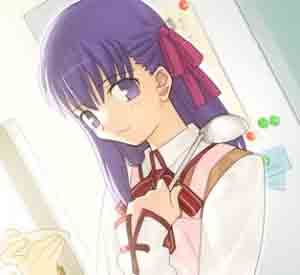
Character development also flourishes in the nonlinear narrative environment. Information is spread out in a manner similar to expository details, and the player chances upon them throughout gameplay. Sakura Matou is the most prominent character to whom this is done, though her traits and background are more concentrated than other characters. In the first branch, it’s clear that Sakura has a troubling home life. Protagonist Shirou knows this, but never has the time or the mind space to really delve into details. He spots bruises on her from time to time, and has even gotten into a fight because Sakura’s older brother, Shinji Matou, left his sister with a mark on her face. There is also a suspected relationship between Rin Tohsaka and Sakura that’s revealed in the second branch, though nothing is solidified. It’s not until the last run that anything significant is revealed and all suspicions are confirmed – and it’s one hell of a reveal. All the player knows before the Heaven’s Feel branch is that Sakura is a kind, quiet girl that studiously helps prepare meals for Shirou everyday, despite some rough home circumstances. Nasu catches everyone off-guard by revealing unfortunate things one after another: domestic abuse, forced adoption, human experimentation, traumatic mental and sexual exposure, rape. As it was with the Holy Grail War, none of the previous details were relevant until that final arc. Sakura’s background isn’t important in the other storylines and is irrelevant.
The examples mentioned thus far have only been discussed in the context of progressive thinking, but retrospectively significant details are plentiful as well. Shinji Matou has always been cowardly and weak, using trickery as his main weapon of survival, but it’s not until the last arc players understand why. Born to a renown line of magi, Shinji was the first generation to display complete inability to perform magic. At first, he’s very enthusiastic about proving everyone wrong and works tirelessly as a child to overcome his innate incompetence. At this point in time, Shinji already had been living with his adoptive sister, Sakura, for a while. He later finds out that his father and grandfather had been training Sakura in secret to inherit the Matou clans magic, and Shinji falls apart, developing his infamous inferiority complex and loses his honest ways. While these details are exposed later in time in a more relevant scenario, they are equally important in justifying his behavior in other branches. His reason in participating in a magical war, his tactics and plans, all are made clear by the structure in which Nasu Kinoko lays out the details. Clearly, nonlinear narrative provides the freedom for author’s to set up a story in which they may separate and clarify attributes at will. Fate/Stay Night has been praised for doing utilizing this aspect of nonlinear narrative exceptionally, and when playing through the novel or watching the anime adaptations, it’s evident that the praise is well-deserved.
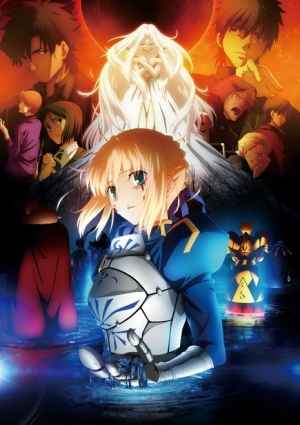
Looking through the eyes of a business, this is ideal for perpetual growth. Not only do branching storylines mean more content to publish, but the dispersion of details creates free consumer interest in exploring future products. In the anime, it’s clear made clear that the Matou siblings have a bad relationship, but as the Heaven’s Feel anime adaptation hasn’t been released yet, viewers who haven’t played the original visual novel are unaware of the true reason for the rift created between the two. Leaving the question up in the air creates a demand for an answer, and thus a reason to watch another Fate/Stay Night work is born, potentially increasing viewership and money raked in. This is one reason Fate/Zero was so popular. It tied up the loose ends of any characters whose backgrounds were mentioned but not fully fleshed out. Ilya von Einzbern, another participating master, has a wavery, unclear background at best in Fate/Stay Night. Fate/Zero remedies this by including her birth and early life as the start of the series. This applies to nearly all characters mention but not given attention in the original work. Going back to a previous point, the prequel also justifies many of the accepted facts of the Fate universe. Fate/Zero pays careful attention to the details given in the prologue and ends the series so that all the events match up according to already given information.
Though character and narrative expansion is a large part of rhetorical freedom, the most intellectually satisfying and least business-oriented aspect of nonlinear narrative is the freedom of overarching thematic development.
Thematically, Fate/Stay Night is all over the place when looked at each individual route. Fate is largely void of any significant discussion, as it’s mostly a love story. Unlimited Blade Works explores the themes of self-reflection and self-sacrifice in subtle details, with contemporary Shirou facing off against his future self. Heaven’s Feel tackles a list of its own, completely distinct from the topics of the previous two routes. Whether playing Fate/Stay Night as a visual novel or watching each anime series, it’s easy and extremely clear that each portion of the overall franchise is its own individual work. But because of – you guessed it – nonlinear narrative, the entire franchise is thematically cohesive when examining each part as what it actually is: a part of a whole. It’s slightly different than chapters of a book or successive sequels of a movie or show in that the characters are only aware of the information and happenings of the current branch. The Shirou from Fate does not and will not know about the relationship between Shinji and Sakura. All of the cohesive thematic exploration is audience-exclusive, and is thus up to the audience to commit to the discussion.
Nasu sets up Fate/Stay Night as Shirou’s extended epiphany and coming-of-age, with each individual branch and heroine representing certain stages of reaching a revelation. In Fate, Shirou ponders a question as he experiences the war with Saber: “What is important to you? What are your ideals?”. Going through the conflict with Rin allows Shirou to explore and answer the questions he had in Fate: “What is important to me is my dream of being the hero that can save everyone, no matter how hard it may be.” His answer is put to the test when he experiences the horrors hidden behind the facade of the war with Sakura in Heaven’s Feel, and he realizes that his answer he pieced together with Rin doesn’t last long in the real world: “I only want to save those important to me, regardless of any negative consequences done to others in the process.” The exploration of the subject is not what makes Fate/Stay Night unique; the coming-of-age discussion has been done countless times, and if anything, the visual novel’s development of the theme is shallower than other great works. What does set the game apart is the execution. This 3-part extension is rare. The discussion spans three individual series and uses more words than then entire Lord of the Rings series, and it’s a long journey to get to the end. But it’s only possible through the use of nonlinear narrative.
Beyond the Decade
Fate/Stay Night has survived the decade, not bad progress for a visual novel released in 2004 by a then novice company. In its path lay innumerable spinoff games, novels, manga, and anime, a sequel and prequel, three anime series of the “canonical” universe, and two animated feature films. Is there anything left to milk? Though unconfirmed and dubious, an anime adaptation for the Heaven’s Feel route may be released. There are doubts about it because taboo topics are so firmly ingrained as a major characteristic of the story. Previous installments have been allowed because sex scenes are easily replaced with something thematically equivalent; however, the events and details in Heaven’s Feel are gruesome and abundant. Fans will have to wait for any information about future series. A Heaven’s Feel animated movie has been confirmed for release in 2015, so there is still hope for a series. In the mean time, the Unlimited Blade Works storyline is being aired as of this moment. So far, it’s looking great and ufotable has done the prologue very well. The art style is a bit different than that of previous works, but is pleasing in its own right. Expect a great 26 week run with more Fate-quality workmanship every week.
On a last note, I mention that Fate/Stay Night has appreciated quality success. What is quality success? It’s not success riding solely on fame or popularity (Naruto (1997), Detective Conan (1994)). It’s not success simply based on aesthetics (Guilty Crown, (2011)). It’s success because its qualities in all aspects are all done well and done well every time with every major media outlet. The plot is intriguing and insightful. The characters are dynamic and well-developed. The art and sound are beautiful and aesthetically pleasing. There’s even a bit of every genre for a wide audience to enjoy. Romance is done convincingly in every arc. The answer to a mystery seems to always be just around the corner. The action is always great, and the supernatural and slice-of-life are blended impeccably in this modern urban supernatural work.
I might sound like a raving fan, and that might be true up to a certain point. But the success of Fate/Stay Night can’t be denied. No other series shares the traits of triumph that Fate/Stay Night boasts. Regardless of whether you’re watching Fate/Kaleid Liner Prisma Illya or playing through the original visual novel, always remember that you’re participating in a decade long work of quality success.
What do you think? Leave a comment.
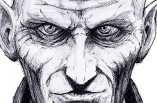

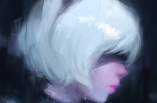
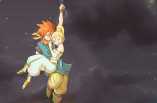
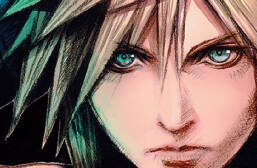
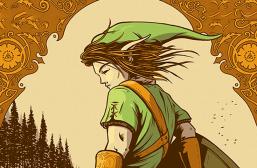
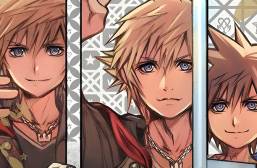

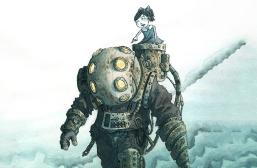


biggest thing i hated from fate stay/night is you have a seven way battle royal and they basically pre-killed-off almost half of the factions pre-start.
Fate/Stay Night anime sucks. The whole time I was wishing Emiya would die a slow horrible death. I get the same feeling of wanting him to die as Makato from school days and Kouichi from Another. Only Makato is where my wish came true.
Well, there’s a new Fate/Stay Night anime that DOESN’T suck now.
Why don’t you watch that instead?
It lets me do things like spend an entire day on the Type Moon wiki just figuring out new details about the series. Love it!
I was first introduced to Fate/Stay Night through DEEN adaptation, then went to Visual Novel. I’ll be honest here, DEEN fail in so many ways. By the time you finished the Visual Novel, you will be asking yourself, “Is it really an adaptation?” DEEN adaptation, while it was quite good compared to other anime released in 2006, it’s pale in comparison to the Visual Novel.
DEEN adaptation fail to explain Noble Phantasm ability. Gae Bolg, Excalibur, Caliburn, Ea, Gate of Babylon, all that seems wrong on F/SN adaptation. Even the fights being watered down. The character. Oh man where do I begin? Let’s start with Emiya Shirou. Shirou isn’t stupid, he’s naive. The VN will explain in detail why he act like that, how he feel and his background. Which explain what kind of person he really is. He really shines in Unlimited Blade Works and Heaven’s Feel route.
Tohsaka Rin and Matou Sakura relationship again never being explained properly. Why is it important? It’s the key reason why Rin went such trouble and provide countless support to Shirou. The history between these two girls will explain why Rin act such way. Heaven’s Feel covers everything important between these two girls.
Of all three route, Fate route (which the one that DEEN was using) was the least interesting. It was a fight to retain Shirou’s ideal self. While Unlimited Blade Works is a fight between ideal self and reality. Heaven’s Feel is the darkest of all three, which about sacrifice ideal self in order to save the one he loved most.
If anyone planning to play the VN after watching the adaptation, my advice is skip the adaptation all together. To give you the idea how bad this is, F/SN adaptation is slightly better than Tsukihime adaptation, Shingetsutan Tsukihime.
Ack. Super insightful comment. I kind of like your comment more than the article. Whoops. Sorry, OP.
I personally found the DEEN adaptation boring. The concept was huge and the storyline basically failed the epic storyline.
I enjoyed Fate/Zero though. What did you think of F/Z?
GREAT READ! Honestly the biggest problem the original F/SN anime has is that it’s a mediocre adaptation of the source material (i.e. the visual novel). Unfortunately a lot of information about magic, the grail war itself, and each master/servant pair’s motivations for fighting were left out of the anime adaptation in the interest of time. What’s also strange is the anime’s decision to throw in a couple of elements from the Unlimited Blade Works route instead of sticking purely with the Fate route, they could have used that time to explain things better.
cant wait for the remake
Excuse my language here, BUT I ABSOLUTEKY FUCKING LOVE THIS FRANCHISE.
DEEN was definitely not the right studio to get their hands on FSN, neither Fate or UBW were done super well. Maybe one day, after UBW and HF are done, Ufo will go back and do Fate justice(and finally include that goddamn Realta nua Last episode ending)
Definitely was looking for the Realta nua ending.. I was so disappointed with DEEN not doing that. One of the bigger flaws of the adaptation of Fate/Stay Night, aside from the ones everyone else mentioned :/ As a standalone, the anime adaptation is good, but when put next to the VN, it’s just not a comparison.
Greatly written piece Austin. As I mentioned to you, I am a stranger in the foreign world of Anime, but I can appreciate your passion and your deep well of knowledge. Peace!
Me and my friend marathon anime with each other and he has watched both f/z and f/sn and I have only watched f/z. He tells me that this show realy isnt woth my time especially if im going to watch the new show
Well Fate/Stay Night 2006 was butchered. I never held Studio Deen in high regards. They tried to pull bits and pieces from the heaven’s feel route near the end and throw them in the Fate Route. F/SN 2006 had so many flaws. I would have liked to see more accurate adaptation of Visual Novel. Especially the mana transfer from Saber to Shiro. Shiro had to supply saber with an alternate source to mana constantly to not let her disappear through certain means. Of course the only time where he can supply her on auto drive is after the church scene. All of these were butchered. Of course you can’t show those scenes on air on TV, but there were ways to show “those scenes” accurately without being explicit in visuals while still keeping the scene the same. Like for instance silhouettes, or camera angle placement. Stuff like the 3D CGI dragon….yeah that was horrible, or just letting it go unexplained was a mess. Should i mention that the build up of the romance was very awkward and really didn’t make sense considering Saber’s vast pride, etc. It was only what I mentioned above, that was cut out or butchered, that gave any sort of reason for advancing the romance subplot between the characters. But we don’t get that and end up with a half-ass explanation near the end…..Saber admits that Shiro made her feel like a woman…this line was kept in the anime but made no sense in any way since most of Shiro’s actions (in the anime) were more insulting than making her feel like a woman. Hence we go back to…well yeah… anyways this is getting too long. The UBW movie did a better job, and maybe the TV will not be afraid and expand on it some more and maybe express some more skinship in a proper way to show the changing of character’s feelings towards each other. To this day I still hate you studio deen for butchering the show.
I’m I the only one who didn’t really like fate/zero?
Yup, yup you are.
Nope 🙂 zero was complete crap especially when compared to the 2006 version
Nice joke.
XD
Dead serious. Zero is an attroacity to the Fate series, my friend.
FSN 2006 > FSN 2014 > FSN UBW Movie > Zero
(Anime 101)
Cool story bro.
shit taste alarm
Let me just say, that roughly every other person in the universe that has seen both F/SN and F/Z can attest to the fact that F/Z was an actual masterpiece compared F/SN. The Stay Night anime in 2006 was absolutely terrible. 2014 wasn’t that great either, but an improvement. F/Z went into the depths of each character, their goals, their purposes, their flaws and personality. In the words of several Youtuber reviews, “Fate/Zero’s only flaw was that it ended to go take care of its strictly worse cousin, Fate/SN”.
Everyone that will watch the series for the first time follow this steps:
1.-Watch Fate/Zero
2.-Watch Fate/Stay Night(remake coming in October this year)
3.-Decide if you wanna watch FSN(2006) even though almsot everything on it is wrong.”you maybe…. can still enjoy it…”
Both Fate Stay Night and Fate Zero spoil each other, but! Zero is the prequel!!! so watch that first.
The worst part about Fate/Zero is its connection to Fate/Stay Night.
Urobuchi just knows how to tell a better story.
Don’t be a zerofag.
Fate/Stay Night was the first visual novel I played.
I haven’t played the VN (but you already know why) so I can only share my experiences with the anime and movie. The show had a badass opening.And I remember the main character of this show having a massive chin. Like, MASSIVE. I guess I was wrong.
Part of the reason I enjoyed it so much was because of Shirou.
Most of the complaints towards the anime are justified, but the hate towards it is a little extreme. I still think it’s a bad adaption, but I wouldn’t reccommend people skip it unless they play the VN instead. Interestingly enough one of the biggest points I never hear anyone address is that it tried to cram all three routes into 24 episodes. Since the VN is basically 3 separate stories with different main characters, combining all of them into a single anime adaptation is near impossible to pull off.
The thing that sucks about Ufotable’s adaptation(s) that are coming up is that the Fate route isn’t included in the mix. Just UBW and a Heaven’s Feel movie.
I enjoyed this series, until Gilgamesh appeared.
Am I like the only person who likes Gilgamesh as a character and not because he’s a self-righteous bastard? Yeah, he’s a major asshole, but unlike fellow servants Saber, Lancer, and to some extent Rider, he actually provides really decent philosophical entertainment. To be honest, I found the first 8 or so episodes of Fate/Zero not a complete turn-off, but rather, slightly boring. The fight scenes were animated well, but the characters hardly did anything of importance to the plot. At least there was no “people die if they are killed” level shit, but the writing came dangerously close to that, in the first half at least. And then Gilgamesh comes with his… attitude, makes Kirei an extremely deep character, motivates him to kill his master, screws Kariyu some more (why did it have to end that way for him D:), kills rider, and proceeds to allow the world into damnation in preparation for the Fifth Holy Grail War. Ultimately, Gilgamesh is an asshole, but a well written one that has, in my opinion, the best mindset of all of the characters in the show.
The Visual Novel is basically porn with a lot of story.
The Anime is horrible to watch after you played the novel.
Fate Stay Night itself is no where near a good anime. However, Fate series as a whole is a good creation at least in my opinion.
The VN is awesome. I watched Fate/Stay Night(2006) before i read the VN and thought it was pretty good at the time as well. The DEEN version butchers the plot, it mixes all 3 of the original routes and doesn’t do it very well.
Fate/Stay Night was okay but not my cup of tea. Fate Zero however…that was a masterpiece!
I adore Fate/Stay Night, but would definitely say it’s not for everyone.
the problem with the current fate stay night anime is that just like the tsuihime anime it tries to mix three different story’s wich does not work (duh). and also leads to numerous rules contradicting eachother and the relation between shiro and thosaka only really becomes clear in the heavens feel route of the vn, it is also then that you find out why she saved him in the first place. also shiro is not really a idiot just mentally damaged by his past trauma.
While I think Fate/Stay Night 06 was all right, I hold a grudge against it because it ruined Fate/Zero for me. I’d much rather have watched Fate/Zero and just waited for Ufotable’s adaption of Fate/Stay Night.
Your writing tone is really stimulating. Really nice article.
Even after a Heaven’s Feel anime, the Fate Series still has several additional directions to continue on.
First up, there’s still Hollow Atraxia, which fills in many of the lose plot threads even three routes couldn’t fill, and reveals even more layers beyond that which Fate/Zero and Heaven’s Feel unveiled. It also answers, in a partial way, the future of some of Fate Stay Night’s cast – most especially Rin, and ties FSN even more to the wider Nasuverse via Zeltretch role in the entire tale of the Three Families who created the Holy Grail Wars.
For example, in Fate/Zero, we know that Kirei married, his wife died, but he left a child behind. What happen to this child? Hollow Atraxia addresses this question. Or in Fate Stay Night, we know that one of the intended Masters never made it to the war – she was “murdered” instead. Who is she exactly? And what exactly tainted the Holy Grail in the first place?
Second up, there are still many other Fate/ Series games and Light Novels, such as Apocrypha, Extra, etc – all of these could easily make for an anime, and all of these reveals even more of the massive world that makes up the Fate Universe, from new angles.
Finally, there’s the Spinoff in an Alternate Universe that’s already gotten it’s first two seasons of an anime adaptation, Fate Prisma Illya, with many implications on the Multi-verse nature of the Fate series. And also interesting explorations on Illya’s characterization. Indeed, the very fact that the Fate Series is set in a Multi-verse, and this multi-verse exist within the very stories of the Fate Series itself ensures that this franchise has far, far more to give, beyond the Heaven’s Feel Anime. The Fate Visual Novel was only a small slice of the world.
It can easily go on for another decade beyond the UBW anime, perhaps even two.
I love Fate/Zero and Fate/Stay Night and all it’s glory…
this year is the 10th year anniversery of the fate/stay night visual novel!
My problem with the Fate series is how it’s very “video-gamey”. Character classes, special abilities, ultimates…it’s almost as if it’s a giant MOBA game.
In League of Legends (a MOBA), Leona got her own Saber skin.
Are you serious!? I haven’t had much time for league the past year. When did this happen!?
one of my favorite video games recognizes one of my favorite animes!
[fanboy rant ending]
I suggest playing the visual novel first or wait for ufotable stay night anime.
I plan to watch Fate Night’s remake first, then Fate/Zero. I only worry that maybe the newer animation on Fate/Night might make Zero look bad.
I loved Fate/Zero, but I only watched one episode of Fate/Stay Night. Maybe now I’ll give it another shot!
I tried watching Stay Night a long time ago, but I couldn’t get into it due to the “relationship sub-plot” between Shiro and Saber…I wish it focused more on the actual fighting instead of the relationships in the war. Fate/Zero on the other hand had an equal balance of the inter-story relationship and fighting, and I was genuinely concerned and intrigued with EVERY single character…even the psychopath master voiced by Mr. Johnny Young Bosch ^^ and you know…Crispin Freeman’s character…because you know….Crispin Freeman XD I love Saber…but I just wish she was given better moments in Stay Night…because she was WAY cooler in Zero.
That’s the thing tho, F/SN never had purely fighting/battle royale thing as a focus in first place
What an insightful article! Lovely. The main thing that sets the franchise aside is its cunning, intellectual plotlines. And I agree that it’s different, much different, than other shounen. What’s more important is that the franchise has achieved this popularity without crude fanservice. Let’s compare it with two anime for that matter. Ghost in the Shell, an intellectual drama with intense mecha and robotic quarrels, showcases Motoko in a leader, robust type of lady (girl for ARISE). Erza, a typical-made character with beauty and popularity is defined as a graceful and potential warrior. And this is where Fate brings its charisma. Saber is both. A perfect blend of beauty with a robust and genuinely brainy character.
I own the anime on DVD, and I own Fate/Zero on Blu ray. I shall be watching both in preparation for UBW. I’m excited.
I love Fate/Stay Night and Fate/Zero
Fate/Stay Night is great, though I do feel that some of the ‘scenes’ (ahem) felt a little out of place and thrown in last second because it was ‘needed’. My only complaint really was that the main character, in true visual novel trope, was really slow on the uptake in a lot of situations.
I’ve tried to watch Fate/Stay Night and Fate/Zero multiple times but could never get into it. Too much info dumping.
I love Unlimited Blade works so far. it explains things so much better. How have you been finding the series so far, Austin?
This is one of my favorite animes, with great voice acting and an incredible story. F/Z is always one of the first I recommend for those getting into the genre. Excellent show.
The Fate series is definitely one of my all-time favorites animes, standing on equal footing with masterpieces such as Code Geass and Gurren Lagaan. I couldn’t agree more with your insight on non-linear narrative, because great artwork and good music can only bring an anime so far. The defining point between a good anime and a great anime is the storytelling, and the inclusive aspect of the way Fate stories are told have established it as a really great anime.
Overall, great article!
I loved Fate/Zero but didn’t realize it was a prequel. Which explains why some reveals were surprisingly undramatic (like Arthur’s identity), something that confused the hell out of me (“Why isn’t this a bigger deal?” I wondered). FSN wasn’t as good, and seemed a much looser connection, but I guess that’s because FZ was a much tighter adaptation.
Haha, this article made me laugh a lot!
Haha, having 999 different storylines! You thought that was possible? Hahahaha!
No, 999 only has 6 differing branches. Very humorous read, though.
Oh, and Fate and stuff, I guess.
Watch FSN 2006, watch the UBW movie, read the visual novel if you can,
STAY AWAY from Zero and the 2014 anime! (complete garbage).
Very well written
If it were me, I’d say skip everything Studio DEEN did with this and just play the VN, watch Ufotable’s UBW and Fate/Zero. In that order. Fate is, without a doubt one of the best franchises out there and actually my first VN. when I played the Fate route, my heart broke and I shed a manly tear. When I played UBW, I was impressed with the writing and myself for figuring out who archer was before the big reveal. Heaven’s Feel was a LOT of exposition, but well written.
This article comprehensively added to my knowledge of the Fate series, thank you. I have not had the pleasure of playing the games but I now plan to! I was unfortunate enough to watch Fate Zero before Fate Stay/Night and found myself deeply disappointed as it was basically an anime made for ten years olds, while Fate Zero had very dark complex moral ambiguities. I know Fate Zero was animated afterwards though, and from what you said, Unlimited Blade Works will be up to its standard. My faith in the series is renewed and I am eager to continue consuming their new content.
Well, I think it’s better to start with the F/S night game, it offers a much more immersive experience and a few badly written sex scenes, which may not be too arousing but provide a good humorous distraction from all the depressing stuff.
I like that you said that the importance animation is subservient to the importance of the narrative. It also makes more intuitive sense.